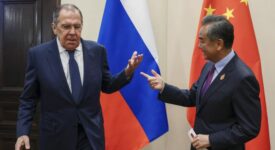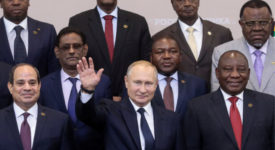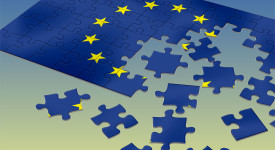The Russian invasion of Ukraine and the rising possibility of a protracted war could lead to the reduction in food supplies just when prices are at their highest levels since 2011. The crisis in Ukraine and Russia, one of the world’s main sources of grain, fertilizers and energy, presents new challenges in securing food supplies on top of a prolonged pandemic, Gabriel Ferrero de Loma-Osorio, head of the United Nations Committee on World Food Security has recently warned. The two agricultural powerhouses combine for nearly a third of the world’s wheat and barley exports. Ukraine also is a major supplier of corn and the global leader in sunflower oil, used in food processing. “We weren’t going well even before the pandemic, the hunger was rising slowly and then the pandemic hit,” said the boss of the UN platform whose main objective is to fight against hunger. He also said that an estimated total of 821 million people around the world are suffering from hunger, which is 161 million more than before the pandemic. Russia’s invasion of Ukraine has had a heavy impact on the availability and prices of food, “so unfortunately, we will need to be cautious, but we can see an important impact on food security globally.”
As Ukraine’s government introduced (6 March) export licensing of key foodstuffs including wheat, corn, poultry meat, and sunflower oil, EU farmers have sounded the alarm over food security across the bloc. Russia’s invasion of Ukraine has therefore sent shockwaves through two of the world’s staple grain markets, with wheat prices skyrocketing last week to their highest level in 14 years. Ukraine alone accounts for 19% of EU wheat imports and 13% of oilseed imports. Some European countries, such as Albania, have already warned that this could see bread and other grain-based staple goods off the menu. The thorny issue of food security in the EU has come the fore as the European Commission warns the EU agri-food sector to brace itself for impact, both now and in the long term. The situation has sparked a number of emergency contingency meetings over ways in which the bloc can ensure food security. EU farmers’ association COPA-COGECA released a statement on Sunday stressing that Europe must equip its agriculture with a “food shield” to face the fallout of a combination of the war together with the looming challenge of climate change. With between 35 and 45% of sunflower oil refined in the EU coming from Ukraine, the EU’s vegetable oil association (FEDIOL) has warned that the supply of sunflower seed oil from the war-torn country has now stopped being shipped to European ports.
While the EU is unlikely to go hungry as a consequence of the war in Ukraine, a protracted conflict could have a devastating impact on areas of the Middle East and North Africa (MENA), according to COPA-COGECA’s Secretary General Pekka Pesonen, who called for an ‘enhanced’ Green Deal package to maintain both quality and quantity in the European food supply. “The main concern is that we would have serious disruption at the international level,” he warned. “The EU can supply its own, we have some stocks, so we have reason to believe that we wouldn’t go hungry. But the consequence of these disruptions that we see coming for our bilateral trade agreements would most probably have a third party impact, especially in North Africa, Maghreb countries, Egypt, possibly the Middle East. And the last time this happened, we had a so-called ‘Arab Spring’ and this time, we need to also recognize the fact that Russia and Ukraine have become very active in these regions in terms of trade.” To deal with the increasingly dire situation in the global food markets, the EU farmers’ association boss suggested that “first and foremost, [the EU] has to carry our weight in these international trade structures – we need to be able to replace those volumes for ourselves that we most probably are going to miss from Ukraine, Russia and Belarus. The second step is to see how much [the EU] can trade, but the reality is that we are talking about relatively big volumes and the EU cannot completely replace this [loss].”
Article Tags:
Belarus · Gabriel Ferrero de Loma-Osorio · Green Deal · pandemic · Russia · Ukraine · United Nations · World Food SecurityArticle Categories:
ECONOMY & TRADE






